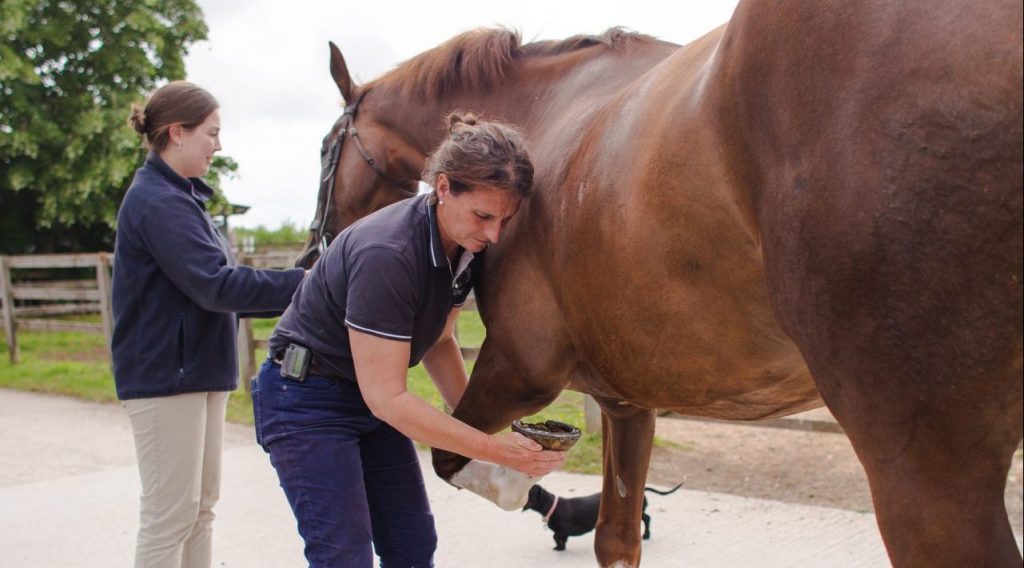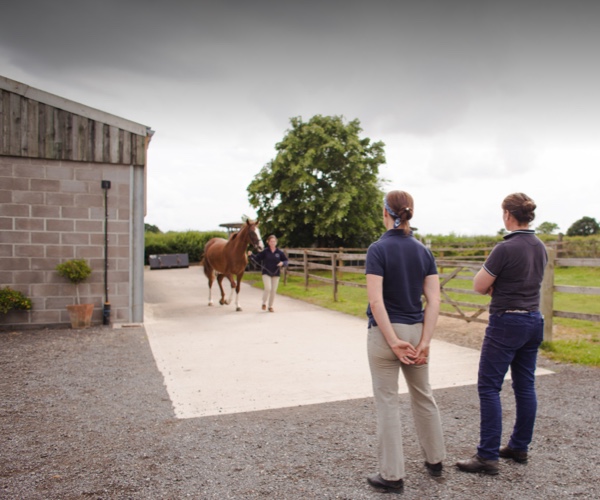Lameness Exams
The team at Gibbs Marsh have extensive experience in lameness investigations, poor performance and sports horse medicine. Whether your horse is struggling at the end of a busy season, on three legs or just not performing to the standard that you would expect, we will be able to help you in getting to the bottom of your concerns.
Every Monday and Tuesday, Hetty and Vicky hold dedicated clinic days at Gibbs Marsh to work up the lame, or poor performing horse. Here at the clinic we have all of the facilities and tools that we need, as well as the helping hand of highly experienced vet technicians to work with your horse for the best diagnostic and therapeutic results. We are able to come out to your yard as well, but if you would like to bring your horse to us, why not have a look at our diary tab, to see when the next clinic is due to be held.
The lameness examination will begin with a detailed conversation with you regarding your concerns and expectations of the future of your horse, and then go on to a general health check. We will assess your horse in walk, trot and canter on the straight line and on the circle, as appropriate. We have a hard trot up, a non slip, hard lunging area as well as an arena to see the horse moving on multiple surfaces. We are also able to assess the horse under saddle in the school if necessary. Palpation of the whole horse can help to detect any swelling, heat and pain in a limb that will then guide us in narrowing down the source of a lameness.

Flexion tests are often performed following an initial trot up and help us evaluate how the manipulation of certain joints affects the subsequent movement of the horse. Flexions are a subjective assessment, however they frequently help to clarify the presence of a low grade lameness as well as indicating the location of pain in the limb.
Nerve blocks are one of our best aids in objectively identifying sources of pain. Nerve blocks involve the injection of small volumes of a local anaesthetic into joints, or around specific nerves that innervate regions of a limb to numb their sensation. This process does require us to place small needles very specifically into the horse’s limb, so in a minority of horses we may not be able to perform this part of the assessment if we do not believe that it is safe for us to do so. We generally have a specific process of beginning at the foot, and working our way up the limb, each time repeating the trot up after 5-10 minutes following a nerve block to assess any change in a lameness.
Once the vet has narrowed down the source of pain for your horse, there are a multitude of diagnostic aids that may be appropriate for the further investigation of your horse’s lameness including radiography and ultrasound scanning of a specific area.

